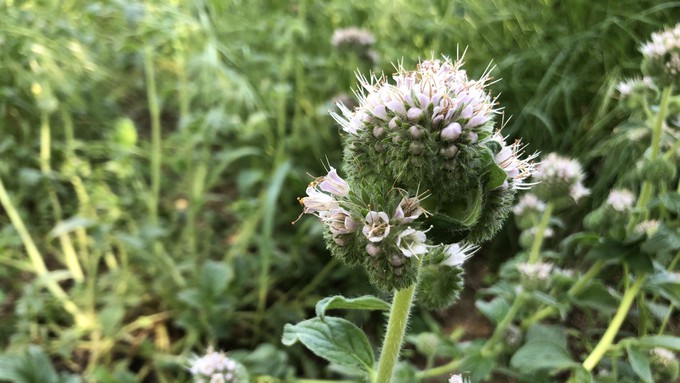
The free tour includes 26 gardens from Folsom to Woodland

This Phacelia californica, aka California scorpionweed or California phacelia, was spotted on an earlier Gardens Gone Native tour. This year's tour is Saturday from 9:30 a.m. to 4 p.m. Kathy Morrison
California natives can be such important parts of residential gardens. But the would-be native gardener, standing in a nursery with a small plant in a 1-gallon pot, might have a tough time envisioning how it's going to fit in with other plants back home.
Can it work in a small garden? How much water does it really need? What does it look like after five years? All crucial information that can be hard to glean from a small tag.
Gardens Gone Native to the rescue! This free self-guided tour of native-centric gardens is the perfect way to view California natives that have found homes in residential gardens. The tour happens Saturday, April 29, from 9:30 a.m. to 4 p.m.
And yes, it's free.
The tour of 26 Sacramento-area gardens is coordinated by the Sacramento Valley Chapter of the California Native Plant Society. Register here to receive the maps of participating gardens, garden descriptions, and more via email.
All 26 sites likely are impossible to visit in one day, so get that online brochure and map out where you'd like to go. Most of the gardens are in Sacramento County, from Folsom to Sacramento's Pocket neighborhood, but some are in Woodland and Davis.
Two are at schools: the Arboretum at Sacramento State and at Bret Harte Elementary; the latter has a new California natives mural created through the Wide Open Walls program. The Miridae Mobile Nursery also will be selling native plants at one of the Sacramento gardens.
Visitors are welcome to ask the garden hosts about their landscape design choices and challenges. The native plants typically are labeled, so be sure to bring a camera (or phone) to record names and what the plant looks like in spring -- certainly a great time of year for California natives.
For more information on the tour, email gardensgonenative@gmail.com
Comments
0 comments have been posted.Sacramento Digs Gardening to your inbox.
Sites We Like
Garden Checklist for week of May 12
Get your gardening chores and irrigation done early in the day before temperatures rise.
* Plant, plant, plant! It’s prime planting season in the Sacramento area. Time to set out those tomato transplants along with peppers and eggplants. Pinch off any flowers on new transplants to make them concentrate on establishing roots instead of setting premature fruit.
* Direct-seed melons, cucumbers, summer squash, corn, radishes, pumpkins and annual herbs such as basil.
* Harvest cabbage, lettuce, peas and green onions. This heat will cause leafy greens and onions to flower; pick them before they bolt.
* In the flower garden, direct-seed sunflowers, cosmos, salvia, zinnias, marigolds, celosia and asters.
* Plant dahlia tubers. Other perennials to set out include verbena, coreopsis, coneflower and astilbe.
* Transplant petunias, marigolds and perennial flowers such as astilbe, columbine, coneflowers, coreopsis, dahlias, rudbeckia and verbena.
* Keep an eye out for slugs, snails, earwigs and aphids that want to dine on tender new growth.
* Feed summer bloomers with a balanced fertilizer.
* For continued bloom, cut off spent flowers on roses as well as other flowering plants.
* Got fruit trees? If you haven't already done so, thin orchard fruit such as apples, peaches, pears, pluots and plums before they grow too heavy, breaking branches or even splitting the tree. Leave the largest fruit on the branch, culling the smaller ones, and allow for 5 to 6 inches (or a hand's worth) between each fruit.
* Thin grape bunches, again leaving about 6 inches between them. For the remaining bunches, prune off the "tail" end, about the bottom third of the bunch, so that the plant's energy is concentrated in the fruit closest to the branch.
* As spring-flowering shrubs finish blooming, give them a little pruning to shape them, removing old and dead wood. Lightly trim azaleas, fuchsias and marguerites for bushier plants.
* Add mulch to the garden to help keep that precious water from evaporating. Mulch also cuts down on weeds. But don’t let it mound around the stems or trunks of trees or shrubs. Leave about a 6-inch to 1-foot circle to avoid crown rot or other problems.